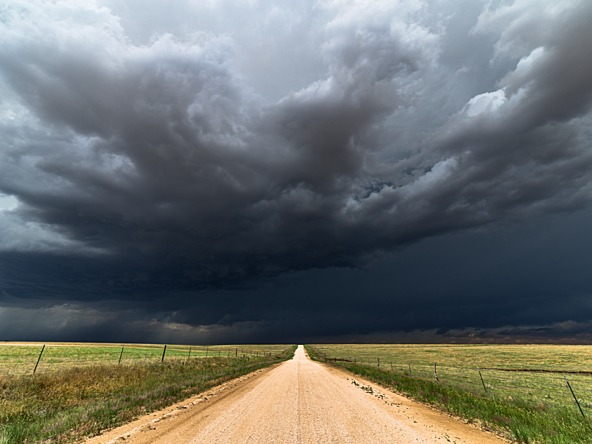To offer future value, what should we be asking ourselves?

I continue to be emboldened by our industry’s renewed focus on the future consumer. We are often guilty of getting so wrapped in targets, trends and manufacture-led thinking that we don’t stop to think of the context in which people are interacting with our brands and products. What is their context? What’s their need now and next? And how do we best place ourselves to ensure we remain a viable choice for consumers, particularly in a BANI (brittle, anxious, non-linear and incomprehensible) world?
People, consumers (however your terminology preference falls) experience an ever-evolving and complex series of competing pressures in their day-to-day. The pandemic, war, strikes, recession, mental health challenges and economic uncertainty all provide an ambiguous backdrop to the day-to-day. From the little things like eating breakfast, buying coffee or a cleaning product, travel choices, socialising and connecting, right up to the big things like buying a home, celebrating a new baby, a promotion, a change in career and finding peace and contentment in life directions.
One thing we see time and again at leading insight and strategy functions at large brands, is that they do understand their role within this consumer context. They do understand how to deliver to real consumer needs within a shifting world. Progressing to this world view is easy; just ask yourself the following four questions. Should we…
- Wait for a perfect leap or make imperfect small steps?
So often, we want to have the perfect fit with our market, or we wait until the timing feels optimal before launching a new product. But how often do we arrive slightly too late to market? How often do we feel our understanding is out-of-date as we try to perfect it?
We must work with what we have, to progress what we know, to do what we currently can do. Imperfect action will always trump perfect inaction. A strategy driven by movement and momentum will win over one stagnant and static.
A great example of a brand that lives and breathes incremental gains is Monzo. Initially launching with a payments card for foreign transactions, it gradually evolved its features to create a product portfolio today which includes consumer and business banking, lending, saving and money management.
- Appease business targets or focus on future consumer needs?
If we can make it, we should, right? This is often the trap we fall into. It’s easy to succumb to manufacturer-led thinking. We continuously innovate around the same consumer needs with products and services that eschew the same benefits as their competitors. We vie for shelf space by making the same things as everyone else. But this is rarely, if ever, a sustainable business strategy that delivers growth.
Focusing on choiceful solutions for future-focused consumer needs is vital for longevity and success.
Heineken has done this well over the last five years. The non-alcoholic beer category had been growing for over a decade when it launched Heineken 0.0. Only after Heineken made a success of it did the rest of the beer category scramble to create their own versions.
- Provide restrictive rigidity or offer flexibility?
In the last three years we’ve lived in a world of flux where uncertainty reigns and plans change. How can we provide flexibility and space for this change, so that we don’t test and break the relationship between consumer and brand?
We need to be as flexible as our consumers and customers are, to make life as easy as possible when the unexpected happens.
Some good examples of this include travel companies during Covid-19 who offered much greater flexibility over amendments and cancellations, much of which has become standard post-pandemic. Additionally, Sky is a business that constantly evolves its pricing and tiering to create increasing levels of flexibility and choice over your TV package.
- Continue perpetuating uncertainty or create clarity?
The world feels scary; misinformation, half-truths, alternative facts, greenwashing and political gaslighting have become a feature of modern life. But consumers can easily spot inauthenticity, hypocrites and ulterior motives. It is becoming harder to earn trust and easier to lose it.
Brands are now operating in a low-trust environment, so communications with customers need to be open and honest. It is important to be both clear about what they can do, but also what they can’t.
Tony’s Chocolonely is a great example of a brand that speaks frankly to its customers. Its mission is to eradicate slavery in the chocolate supply chain, and it communicates that directly to its customers across all of its touchpoints.
These questions are intentionally large, to allow scope to explore what it means for your business, in the context of right now, and where you want to go. These will be, and should be, ever evolving questions to return to as the world changes. So I challenge you, today, to take stock, discuss, and ask yourself, “are the choices we’re making day-to-day ensuring our strategy is focused on providing future consumer value?”
Danielle Todd is director at The Forge

We hope you enjoyed this article.
Research Live is published by MRS.
The Market Research Society (MRS) exists to promote and protect the research sector, showcasing how research delivers impact for businesses and government.
Members of MRS enjoy many benefits including tailoured policy guidance, discounts on training and conferences, and access to member-only content.
For example, there's an archive of winning case studies from over a decade of MRS Awards.
Find out more about the benefits of joining MRS here.












0 Comments